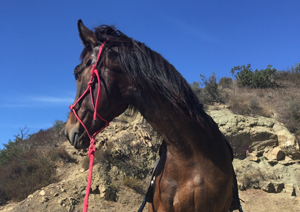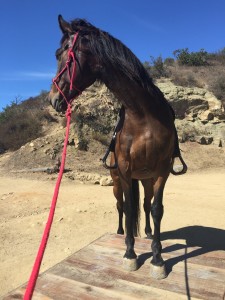
What does it mean to be malleable? Why must we be it? How do we be it? Well let’s start at the top and weave our way through.
What is malleability?
Merriam-Webster defines malleable as:
: capable of being stretched or bent into different shapes
: capable of being easily changed or influenced
In thinking about malleability when working with horses, let’s look at the purpose of any given session with a horse. Usually when working with a horse, you should have some sort of lesson plan in mind, however small or sketched out (i.e., “let’s work on following…”).
Sometimes, though, things don’t go according to plan.
Being malleable means adapting or changing the course of a session based on real-time feedback from the horse.
Why must we be malleable?
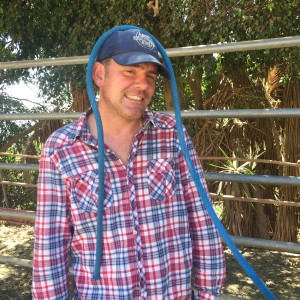 Because, silly goose, you are not everything to your horse. You are not the most or even second most important thing in his world (even if he’s the most important thing in yours). Basically you’re just this human he knows comes around a lot. Plus, horses don’t stick to lesson plans so easy. They get distracted and bored, or sometimes they’re more interested in other things, like another horse or a plastic bag floating by. Remember: horses are not people. So instead of rigidly sticking to a plan that, at best, barely registers with your distracted horse, we should incorporate what the horse is focusing on into the session. If we can successfully weave the surrounding conditions into the game plan, or if we even abandon our plan for a while to address the horse’s immediate fixations, we can keep the horse happy and have an overall more productive and effective session.
Because, silly goose, you are not everything to your horse. You are not the most or even second most important thing in his world (even if he’s the most important thing in yours). Basically you’re just this human he knows comes around a lot. Plus, horses don’t stick to lesson plans so easy. They get distracted and bored, or sometimes they’re more interested in other things, like another horse or a plastic bag floating by. Remember: horses are not people. So instead of rigidly sticking to a plan that, at best, barely registers with your distracted horse, we should incorporate what the horse is focusing on into the session. If we can successfully weave the surrounding conditions into the game plan, or if we even abandon our plan for a while to address the horse’s immediate fixations, we can keep the horse happy and have an overall more productive and effective session.
How do we be malleable?
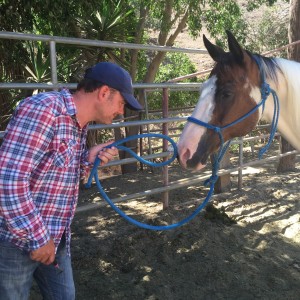 First we must be willing. No need to be so serious—it’s OK to be silly! We all make mistakes, horses and people alike, so it’s best to accept this right off the bat. Sometimes it’s easy to take a horse’s lack of interest personally and get frustrated. But think about this:
First we must be willing. No need to be so serious—it’s OK to be silly! We all make mistakes, horses and people alike, so it’s best to accept this right off the bat. Sometimes it’s easy to take a horse’s lack of interest personally and get frustrated. But think about this:
- It’s not personal; it’s just horse behavior. Horses are horses, not people, so they never, ever doing anything intentionally to annoy you.
- It’s not about you—not even a little bit. Horses think primarily about survival at all times. Most of the time when a horse ignores you in favor of some other distraction, it’s not because he’s tired of you, it’s because he has something more important to his survival in mind than your desire to have him lift his front right foot.
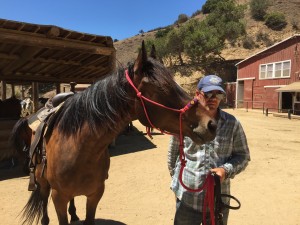 So the first step is to expect the horse to lose interest. That way, when he does lose interest, you won’t be offended—you’ll just adapt. You’ll say, “Hey, I can see you have something you want to see or do. Let’s go see or do that. Let’s see what we can learn.” Then after you’ve addressed his curiosity or fixation, make your way back to what you wanted to work on if it makes sense under the circumstances.
So the first step is to expect the horse to lose interest. That way, when he does lose interest, you won’t be offended—you’ll just adapt. You’ll say, “Hey, I can see you have something you want to see or do. Let’s go see or do that. Let’s see what we can learn.” Then after you’ve addressed his curiosity or fixation, make your way back to what you wanted to work on if it makes sense under the circumstances.
What’s an example?
So imagine taking your horse into the arena to work on something, let’s say, stretching. First you need him to stand still. You get him where you want him, and he’s standing still and relaxed. You bend down to his left front hoof and ask him to lift, when suddenly a plastic bag blows into the arena. Your horse’s head snaps up and he snorts, staring, stiff-bodied at the sight of the unassuming little bag. In this moment he’s too distracted to do anything but stare. Your plan to work on stretching is quickly going out the window. And because plastic bags aren’t easily explainable to horses, your horse isn’t going to be paying attention anytime soon.
Should you just soldier on and continue trying to pick up his hoof while he stares, terrified, at the plastic bag? How about not.
Instead, adapt. Be malleable. Use this an opportunity to address the sudden appearance of flying plastic bags with him. Take him to the plastic bag. Allow him to inspect it, allow him to smell it. Maybe even pick it up and allow him to see it up close, to touch it. When eventually he sees that it’s not going to hurt him, you might try something really crazy like asking him to lift his hoof while standing near the bag. How about getting him to touch it with his foot? Now you’ve brought the plastic bag into your lesson; you’ve adapted and kept the session going in a productive way. Bravo!
Here’s the real thing in action:
Breaking It Down:
Whether you’re working on the ground or riding, being malleable will help keep your relationship with your horse moving forward. Horses get distracted and bored easily. It’s not personal, and we should be willing to adapt what we planned to do in order to keep the horse learning and interested—if you can manage to do that, you’ll consistently have more effective and productive sessions working with your horse.

